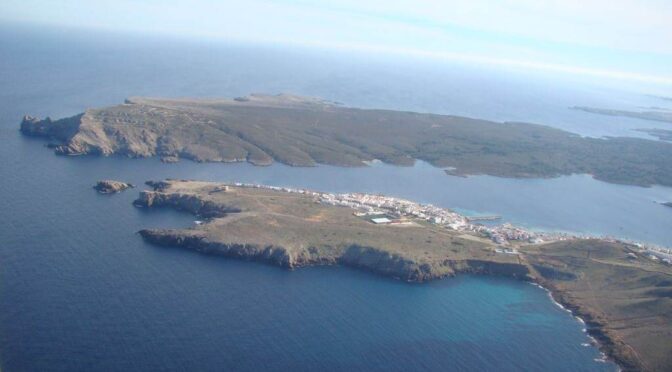Views: 1143
The renovation of Fornells Port is a delicate balancing act, as all activities related to maritime services take place in an area of great marine value. For this reason, the project was approved with a series of environmental conditions that tend to be repeatedly overlooked. Unfortunately, this is happening once again.
The planned expansion of berths is subject to prior actions that have yet to be carried out. The GOB understands that the resolutions regarding the project are clear and that Ports of the Balearic Islands cannot ignore that the port project was deemed viable only because it was conditioned by specific requirements.
A zone of high marine value
Fornells is a haven of marine biodiversity in the Mediterranean, especially threatened by nautical overcrowding. Uncontrolled anchoring, vessel navigation in shallow areas, high speeds that disturb the seabed, and unchecked toxic discharges all contribute to the degradation of an area with various official protections.
When discussions about the port renovation began, most stakeholders focused on the design of the new building. Merchants, residents, political groups, the local council, and the Town Hall of Es Mercadal debated this issue extensively. With the new building covered in discussions, efforts were directed toward addressing other impacts that had not been as widely debated.
These efforts included reorganizing pontoons to reduce their physical impact on Posidonia reefs, implementing strict controls on toxic substances (such as hydrocarbons, oils, and paints) that often enter the sea from maintenance areas, clearly characterizing the toxicity of dredging sediments, delineating no-navigation zones, and assessing the nautical carrying capacity of the surrounding area.
Appeals, objections, and written exchanges
The GOB filed an appeal against the tendering of works to ensure compliance with the environmental conditions set by the Environmental Commission, which were not reflected in the tendering specifications. Most of the concerns were subsequently addressed and incorporated.
Over the years of construction, the organization has continued to request information and highlight situations that deviated from the established obligations. A substantial exchange of correspondence has allowed the GOB to closely monitor the progress of the marine-related aspects of the project.
New berths conditioned on prior installation of ecological buoys
According to the 2020 environmental impact declaration, later adapted in 2022, Ports of the Balearic Islands must finance, install, and directly manage 8 buoys at Cabra Celada and 14 buoys behind the breakwater. The installation project must undergo the appropriate environmental procedures.
Additionally, Ports IB must finance 55 buoys outside the bay of Fornells by contributing the corresponding amount to the Posidonia Fund.
Ports IB is also required to contribute €30,000 per season to the Posidonia Fund to fund a mooring patrol officer who will oversee the Site of Community Importance of the Marine Area of Northern Menorca and the SCI of Punta Redona-Arenal d’en Castell daily during the summer.
Menorca has already exceeded its nautical carrying capacity
Studies on nautical capacity conducted by Ports IB in 2020 demonstrated that Menorca has long exceeded its maximum capacity for hosting boats in coves and beaches. There are more boats navigating Menorcan waters than the maximum recommended in these reports.
For this reason, the GOB believes that continuing to create more and more berths is no longer justifiable. Using the argument of a waiting list is inconsistent, as in a market open to the entire world, the waiting list will never end.
The significant increase in berths over the past decades has not eliminated waiting lists. In practice, as is happening again in Fornells, the management of mooring points becomes privatized and is left to those who can pay the most.
At the very least, any increase in berths should be conditioned, as in Fornells, on enhancing boat parking capacity in coves and beaches by installing ecological mooring fields to prevent anchoring in protected areas.
However, these conditions cannot be ignored. The GOB demands that, in accordance with environmental regulations, the ecological mooring fields be installed first, followed by the new berths.

